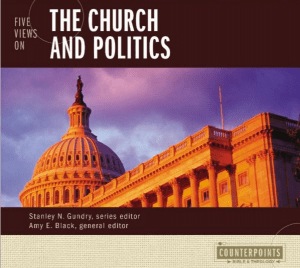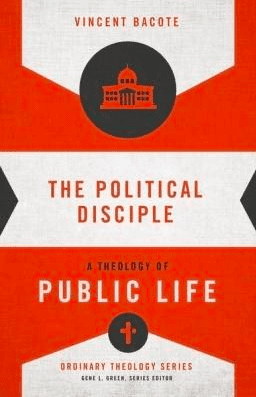Quantitative what? Quantitative easing? What’s that? Recently the Federal government decided to do some quantitative easing to stimulate the economy. One thing we try to do on this blog is keep ourselves informed of such matters, and so I’ve asked our blog companion…
Michael Kruse to write this post to help us understand what’s going on with the printing of new money.
Those of you who are economists might want to come at this from your angle and help the discussion.
Why are we talking about “printing more money” to help the economy? The technical term for the proposed action is “quantitative easing.” Quantitative easing is a measure used by central banks to increase the money supply in the economy. “Quantitative” because it increases the amount of money. “Easing” because it loosens the seized up money flow in the economy.
Central banks (the Federal Reserve Board in the USA) aim for a balance of solid economic growth (with high employment) and minimal inflation. The challenge is that these two factors tend to work against each other. A key to achieving a balance is to keep the supply of money in the economy at a similar ratio to the value of all goods and services over time.
Imagine being at an auction with a large group of people. There will be a fixed amount of money “chasing” the fixed amount of goods being sold at the auction. Now say we go around and put an extra $100 in everyone’s pocket. The quantity of goods remains the same, but as people bid for the goods the prices will inflate. People have more dollars to bid with. If we take $100 away from everyone, then the prices will deflate. Of course, things are not this static in an economy. The value of available goods coming to market is always fluctuating.
Typically, the central bank uses three tools to manage the cost and supply of money. The central bank can raise the interest rate it charges to lend money to banks. That makes lending more costly and constricts the amount of money that flows in the economy. Lowering the rate will have the opposite effect. The central bank may also change the percentage of money that banks must keep in reserve in relation to what they lend. A higher ratio makes less money available and a lower ratio means more money available.
The third means of influencing the money supply is the Federal Open Market Committee (FMOC). The central bank sells government securities to the public. That pulls money out of the economy into the central bank. Interest rates rise and the dollar rises on foreign exchange markets. Consumption and investment decrease while net exports also decrease. Aggregate demand decreases causing real GDP growth and inflation to slow down. If the central bank wants to accomplish the opposite of this cascade of events, it buys securities from the public, which drops interest rates; causes the dollar to fall; consumption, investment, and net exports increase; aggregate demand increases … all resulting in GDP growth with more inflation.
As you may have noticed, the economy hasn’t been doing so well the last two years. The president and congress have used fiscal policy to stimulate economic growth. They spent large sums of borrowed money in an effort to stimulate the economy. Other options might include tax cuts, which leave more money in the hands of the private sector. That leaves more money in the hands of consumers to spend and it leaves more money in the hands of investors, thus decreasing the cost of money used in enterprise. But like stimulus spending, it also means greater deficits and more debt (assuming no significant cuts are made in government spending.) Whether through stimulus spending or reduced taxation, the strategy is to incur debt in the near term with the expectation that stimulated economic growth will compensate for the debt in the future.
So why are we talking about quantitative easing? Other options have been exhausted and the Federal Reserve believes it needs to do more. There is disagreement and fatigue among government leadership with regard to stimulus spending and taxation. The central bank has been cutting tax rates to near zero and you can’t cut lower than zero. There is only so much you can do with fractional reserves. And still the growth is very weak with insufficient job creation.
Quantitative easing is the exceptional measure the Federal Reserve is pursuing. The Fed credits itself with more money … technically not “printing money,” but similar. It uses the new money to buy bonds, equities, houses, and the like … driving up their prices. A bound bond comes with a fixed rate of interest, but how much people pay for a bond varies. If I have a bond for $1,000 that pays 5%, and I sell it to you for $1,100 dollars, then you are still only going to get 5% of $1,000 (or $50). Fifty dollars is a smaller fraction of $1,100 than of $1,000 , so the effect is that it has made it cheaper to sell bonds. Equities rise, making it easier to do stock offerings, and housing prices rise, making real estate more attractive to sell. Through impacts like these, quantitative easing increases the amount of money circulating and increases the money available for lending in the credit markets, while also stimulating rising prices in some key markets.
But let it be noted that quantitative easing is controversial with many economists. You have to hit the amount of money you pump into the system just right. If you pump in too little, then government ends up having purchased a great deal of debt that will have to be paid with future tax revenues … causing even a greater drag on the economy … and no economic benefit to show for it. If the assets purchased continue to deteriorate in value in a weakening economy, then you get an even worse impact. If you pump too much in, then you can spark hyperinflation. That is why it is seen as an extraordinary measure.
For a more authoritative resource, you might want to check out a description of “quantitative easing” at the Financial Times.











